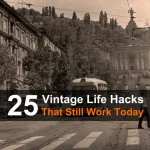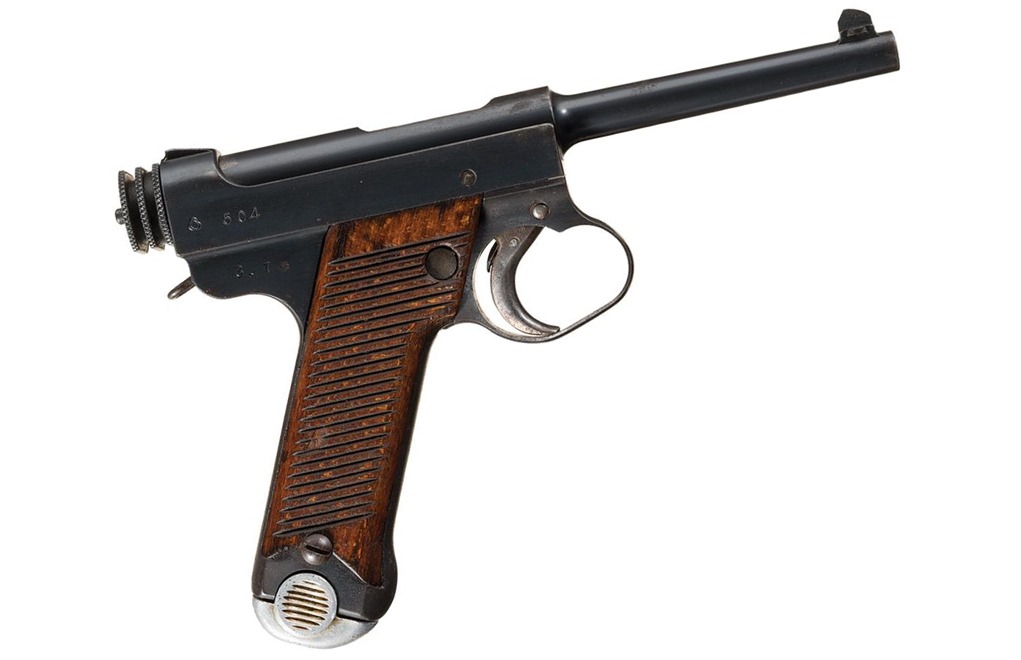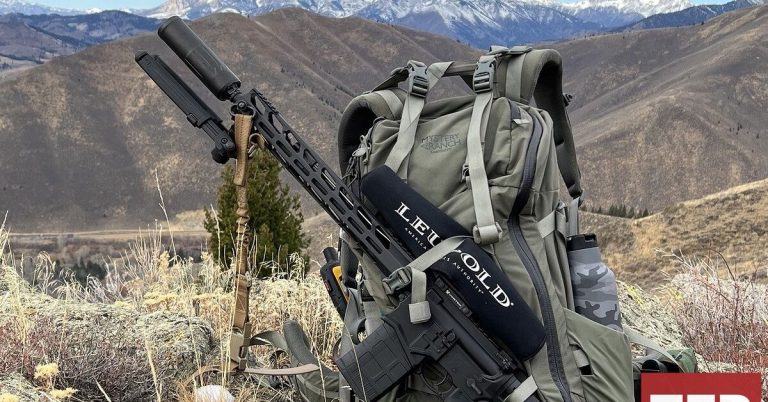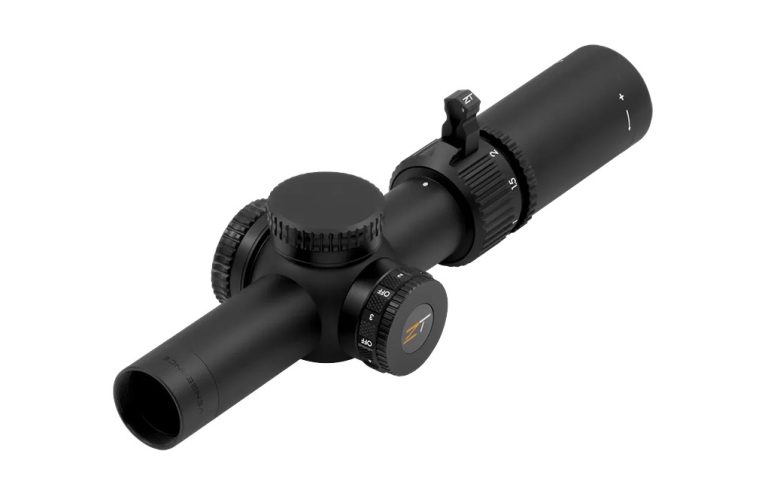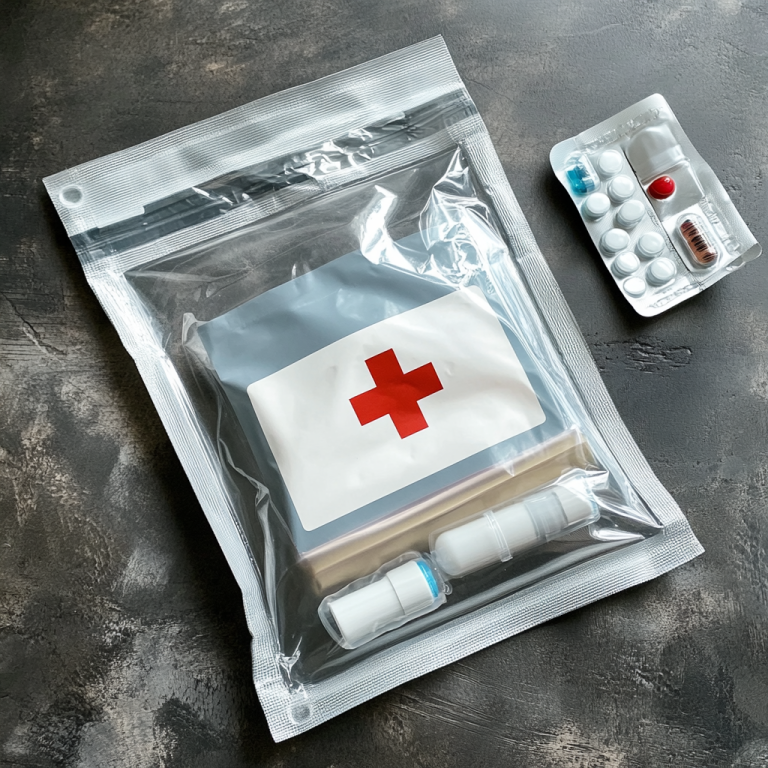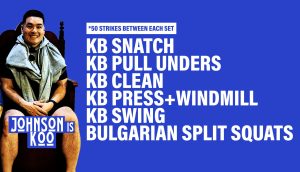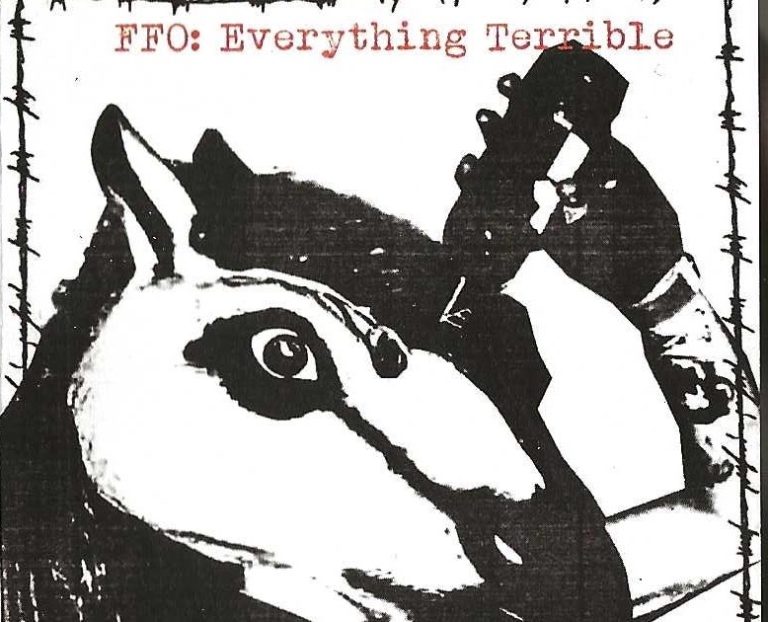The Japanese Nambu pistol has a reputation for being one of the worst sidearms of WWII, but is it as bad as everyone says?
At the turn of the 20th century, Japan’s history of making firearms paled in comparison to that of the West. The closest thing to a contemporary service sidearm Japan had developed at this point was the Type 26 revolver in 1893. It was an amalgamation of other revolver designs from Europe and the U.S.
Developing the first semi-automatic pistol for the Japanese military was a daunting task, and it was assigned to Kijir? Nambu.

Nambu had previously worked under the Japanese firearms designer Nariakira Arisaka developing the Type 30 rifle, and it took him five years to design his semi-auto pistol.
The pistol he developed in 1902 was a locked-breech, recoil-operated design chambered in an 8mm cartridge. It spawned a series of military-grade sidearms that took his name and were used by the Japanese Navy and Army starting during the Russo-Japanese War through World War II as well as afterward in smaller conflicts.
While semi-automatic pistols made by companies like FN and Mauser at that time were proven and effective weapons, the Nambu pistol was at best a runner-up. Justly or unjustly it was burdened with the reputation of being an odd-functioning gun chambered for an anemic caliber.
If it weren’t for American GIs in the Pacific lusting after the Nambu as a war souvenir, the Japanese pistol would probably have been long forgotten.
First Successful Japanese Semi-Auto Pistol
With its design finalized in 1902, the original Nambu was one of the earliest successful semi-automatic pistol designs ever, which is noteworthy. However, the performance of European- and American-designed pistols overshadowed it.
There were three major variants of the Nambu pistol—the Type A, the Type B and the Type 14, the last of which is the most common and most produced variant. Most Nambu pistols were chambered for 8x22mm Nambu, a rimless bottleneck cartridge developed for the Nambu but also used in the Type 100 submachine gun by the Japanese military.
Both the pistol and the caliber earned a poor reputation. The Nambu was difficult and tricky to reload and the 8x22mm cartridge was less powerful than other common handgun calibers of the time such as 9x19mm Luger and 7.63x25mm Mauser.

Grandpa and Papa Nambu Variants
The first version of the Nambu is known as the Type A. This pistol design was completed in 1902 and produced from 1903 to 1906. As it’s the original model, it’s referred to as the Grandpa Nambu by collectors. On the outside, the look of the Type A has similarities to the P08 Luger due to the swept-back grip and skinny, protruding barrel, but the two pistols are very different mechanically.
The Type A, like all Nambu variants chambered for 8mm, is a recoil-operated, locked-breech, semi-automatic pistol with a detachable 8-round magazine. The sights consist of an adjustable tangent-style rear sight that goes out to 500 meters and a blade front sight.
That’s wishful thinking for the 8mm Nambu round at best, as part of the Nambu’s poor reputation comes from the 8x22mm Nambu cartridge.
The round featured a 102-grain FMJ bullet traveling at about 960 fps with a bit over 200 foot-pounds of energy which is slightly less powerful than .380 Auto. Compared to the 9x19mm Luger and some of the other common pistol cartridges used in WWII, 8mm Nambu is definitely on the weak side.
The rear backstrap of the Type A also had a slot for attaching a wooden stock that doubled as a holster, similar to the Broomhandle Mauser, and there was a fixed lanyard loop on the back of the frame. Production ended in 1906 when an improved model was introduced.
That improved model was called the Type A Modified, or “Papa” Nambu variant. The trigger guard was enlarged for use with gloved hands, the stock slot was removed and a swiveling lanyard loop was added. The pistol’s magazine geometry also changed as well as the material used for the baseplates, and the magazines are not interchangeable between the Grandpa and Papa Nambus.
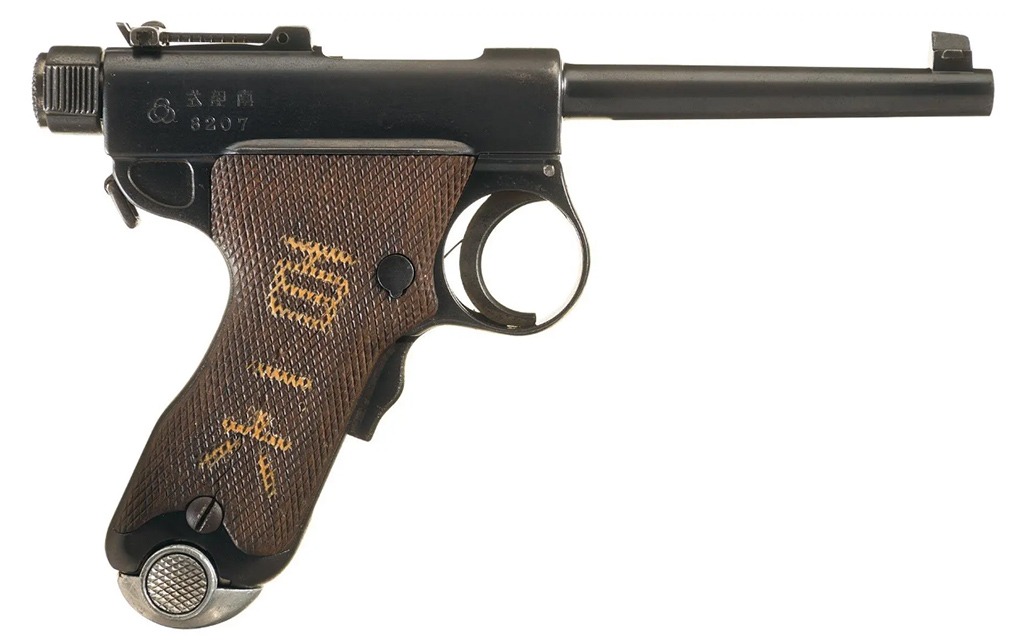
TYPE A MODIFIED “PAPA” NAMBU SPECS:
Cartridge: 8x22mm Nambu
Action: Locked breech, short-recoil
Magazine: 8-round detachable box
Barrel Length: 4.6 inches
Safety: Grip safety
In this time period, officers in the Japanese military were required to purchase their own sidearms, and both variants of Type A Nambu were used despite neither model being officially adopted by the Japanese Army. As far as official adoption goes, only the Japanese Navy would select the Papa variant for standard issue.
The “Baby” Nambu
The Type B Nambu is a scaled-down version of the Type A and is referred to by collectors as the Baby Nambu. This gun is sized to fit in a pocket but was mostly used as a badge of rank within the Japanese military.
The Type B operated the same way as the larger versions of the Nambu, but the Type B was chambered for 7x20mm Nambu, a smaller cartridge than the 8x22mm Nambu, and it used a 7-round magazine.
This round was even more anemic, as it fired a 56-grain bullet at somewhere between 800 and 1,000 fps from its 3.25-inch barrel. For context, that’s even less powerful than .32 ACP, but not by a huge margin. Production spanned from 1903 to 1929 where about 6,000 are estimated to have been made.
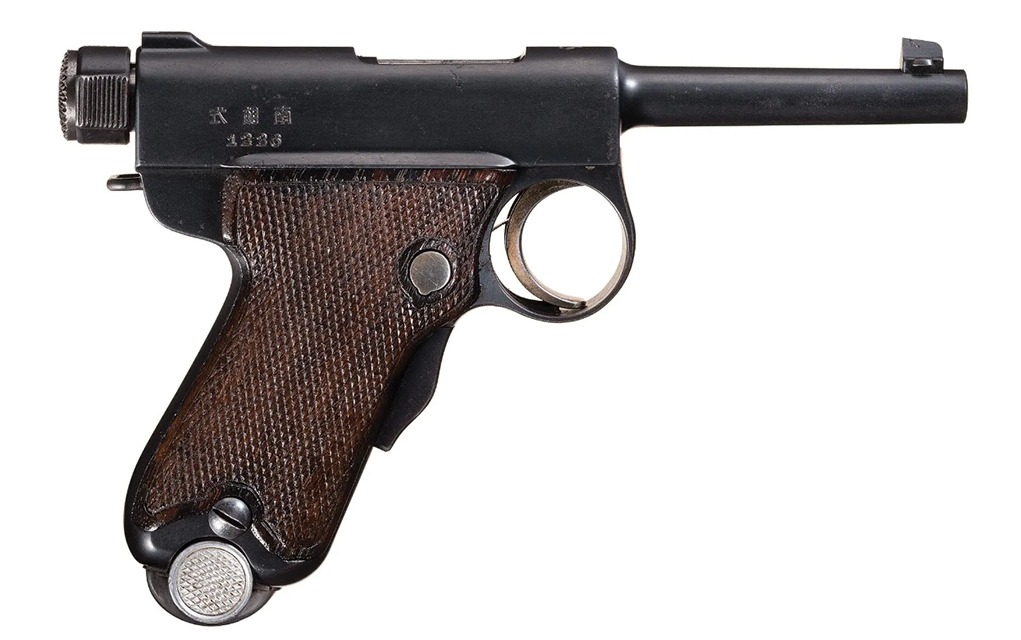
TYPE B “BABY” NAMBU SPECS:
Cartridge: 7x20mm Nambu
Action: Locked breech, short-recoil
Magazine: 7-round detachable box
Barrel Length: 3.25 inches
Safety: Grip safety
How Type A And Type B Nambu Pistols Operate
As recoil-operated pistols, when a Nambu is fired the barrel assembly reciprocates backwards to unlock the bolt, then the bolt continues back to eject the case, reset the striker and load a fresh round. This system is similar to a Mauser C96 broom handle. The guide rod and recoil spring are housed in a small tube on the left side of the frame and a large knob at the back of the bolt is used to retract and cock the pistol.
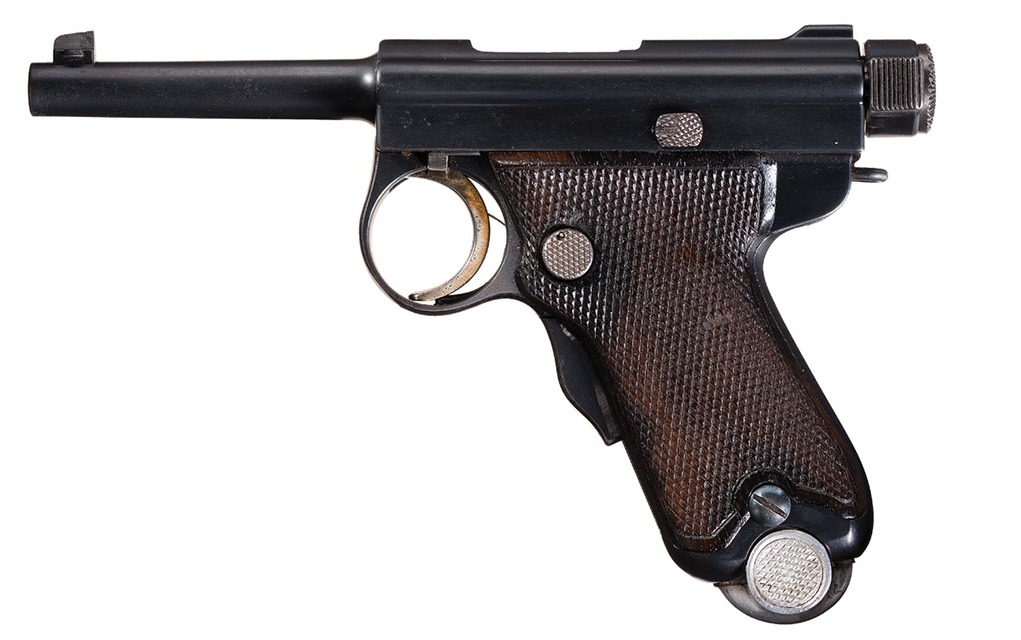
The bolt locks back on an empty magazine, but when the magazine is removed the bolt flies forward. There was no bolt hold open feature which made reloading the Nambu a bit tricky. The magazine release is a button just behind the trigger, similar to modern pistols.
There is also a grip safety on the front strap that when squeezed allows the pistol to fire. Further, neither variant of the Type A nor the Type B featured a manual safety of any kind and only relied on the grip safety.
Type 14 Nambu
Introduced in 1925, the Type 14 is the most common Nambu variant and is an evolution of the Type A. The name stems from the fact that it was designed in the 14th year of the Taish? era according to the Japanese calendar of the time.
The design was primarily tweaked with the intention of reducing production costs and time. As for its ammunition, the Type 14 was chambered for the same 8x22m Nambu cartridge as the earlier Type A guns.
The Type 14 Nambu had a 4.7-inch barrel and wood grips with distinctive horizontal serrations. The most obvious difference between the Type A and B models and the Type 14 is that the Type 14 employed a pair of recoil springs built into the sides of the bolt, replacing the single recoil spring located on the side of the frame on the Type A and B guns. Besides this, the Type 14’s short-recoil operation was fundamentally the same as that of its predecessors.
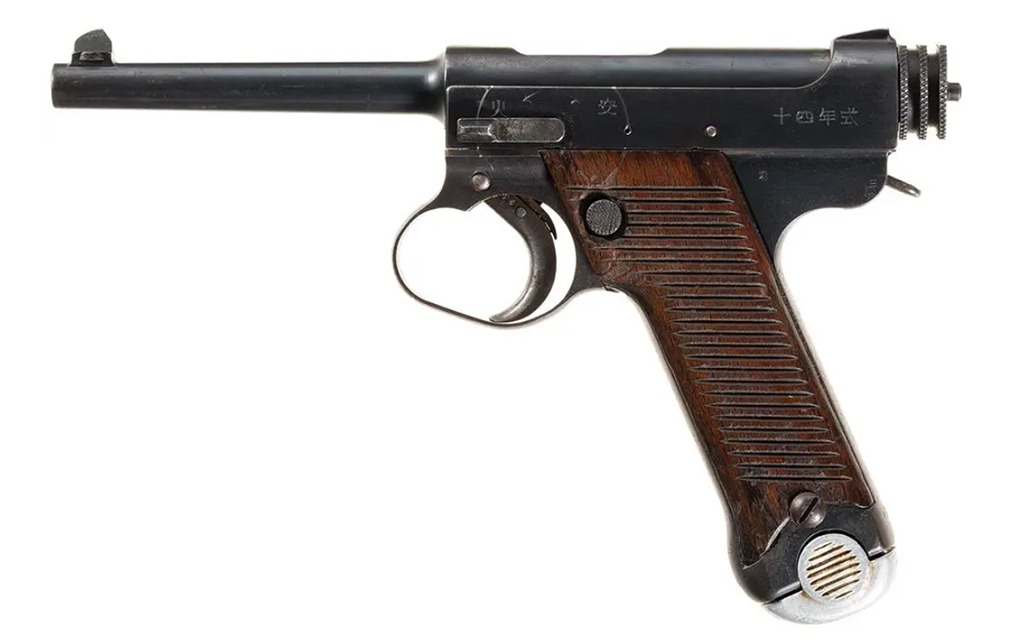
TYPE 14 NAMBU SPECS:
Cartridge: 8x22mm Nambu
Action: Locked breech, short-recoil
Magazine: 8-round detachable box
Barrel Length: 4.6 inches
Safety: Manual safety
The Type 14 also introduced a manual safety located on the left side of the pistol above the trigger, although it was very unergonomic as it required the shooter to use their support hand to operate it. The safety rotates a whopping 180 degrees, and this is one of the design quirks of the Nambu pistol that aided in sullying its reputation since the safety was neither easy nor quick to engage or disengage.
Most European and American pistol designs of the time already had safeties that could be operated with the thumb of the firing hand. The grip safety was also omitted on the Type 14.
A magazine safety was also incorporated into the design preventing the trigger from being pulled without a magazine inserted. Like the earlier models, the Type 14 also had no independent bolt-hold-open device and would only lock open with an empty magazine inserted.
The Type 14 was officially adopted by the Japanese military and issued to non-commissioned officers. Officers were responsible for purchasing their own pistols.
While the guns produced before the end of WWII showed excellent workmanship, as conditions worsened in Japan, so did the fit and finish of the firearms they made.
If the Nambu has an Achilles heel, it’s the fragile firing pins. Type 14 guns were issued with a spare firing pin since a small tab could easily shear off when dry firing or in actual use. A gun issued with spare parts does not promote confidence.
Although officers still had to pay for their own pistols, the Type 14 was adopted by the Japanese military as the official sidearm following its introduction. Production ceased in 1945 upon Japan’s defeat and it’s believed that about 400,000 were made in total.
The loss of official records and the widespread phenomenon of officers destroying them before surrendering them to Americans makes that a hard figure to know for certain.
Collecting Nambu Pistols
Just as the Luger was a coveted prize in the European theater of WWII, so too was the Nambu in the Pacific. Americans love their war trophies (who doesn’t), and GIs fighting in the East were eager to get their hands on the exotic, foreign pistol.
It doesn’t appear any Nambu variant was ever imported commercially into the U.S., so the examples that exist on the collector’s market here are all GI bringbacks from the war. This makes them quite rare, and they’re only getting rarer and more expensive.
While there are likely still examples sitting in family safes around the country as heirlooms in memory of grandpa, there aren’t enough that their introduction to the collector’s market would tip the scales in your favor as a buyer. If you want to buy one, sooner is better than later. That’s just the way military surplus goes.
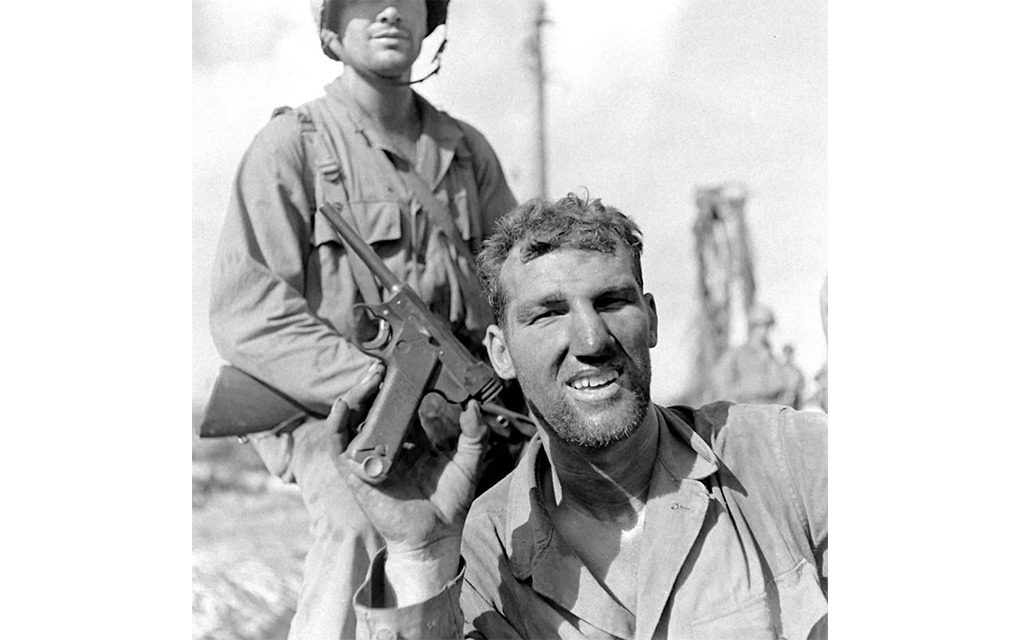
Nambu Pistol Prices
We won’t get into the nitty gritty of pricing here, as it can vary a lot based on condition, production year and the exact model in question, but all Nambu pistols are now quite expensive.
The Type 14, the most common variant, tends to start at around $1,000 these days for one in OK condition. In nicer condition Type 14s only go up from there, and rarer models like the Baby Nambu can easily demand $5,000 or more. That said, if you buy one, you can thankfully still shoot it if you desire to as a few companies like Steinel thankfully offer ammo for them.
Does The Nambu Deserve Its Reputation?
At the time the Nambu was first produced, Japan’s firearm industry was far behind Europe and the U.S. The fact that the Nambu was Japan’s first semi-automatic pistol (as well as being among the earliest semi-auto pistols ever) and that it worked as designed is a major accomplishment.
We all agree that the 8mm Nambu cartridge is anemic at best, but keep in mind that military handguns of the time primarily served as a signifier of rank for officers and were only really used as an emergency defensive weapon. Many European military handguns of the same era were chambered for .380 Auto or .32 Auto and both Axis and Allied officers carried handguns chambered for these.
If the Nambu is severely lacking in any department, its ergonomics and user-friendliness.
Despite its poor reputation, the Nambu is not without its strong points. Bill Ruger borrowed elements from the Type 14 to create the Ruger Standard .22 LR in 1949 which went on to become one of the most popular semi-auto rimfire pistols ever produced. Because of this, the Nambu still lives on today in the Ruger Mark IV.
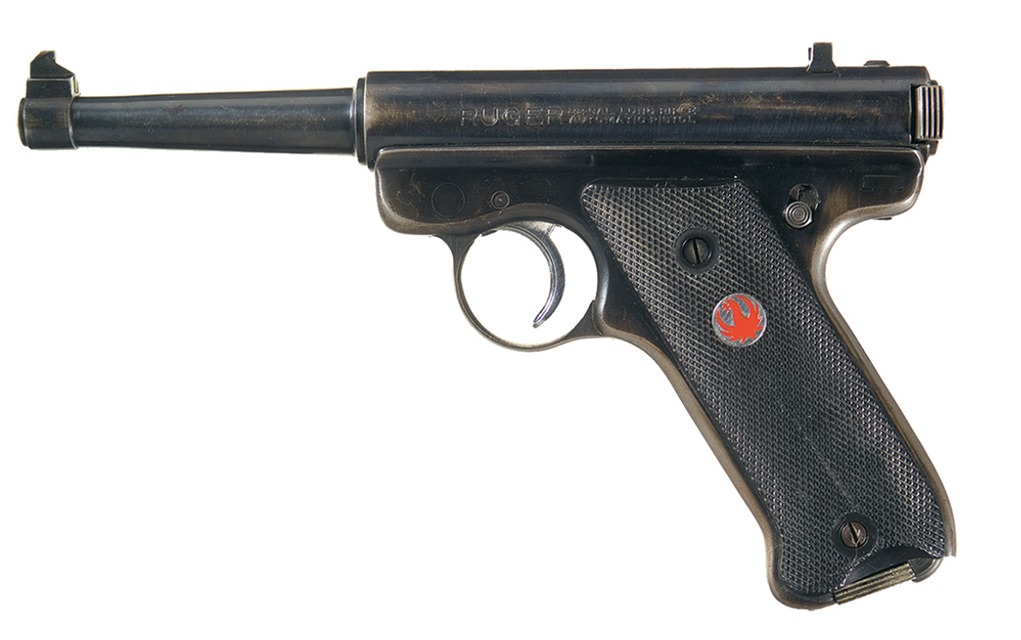
The quirks of the Nambu like its awkward manual safety and lack of a slide stop made the gun more difficult to run compared to other handguns of the time, but I’d say that the Nambu’s reputation is worse than it really deserves. Its cartridge was definitely lackluster, and it had several ergonomic issues and oddities about it, but considering that the basic design was invented in 1902 and that Japan had no real history of making modern guns, their successful development of a functioning semi-auto pistol deserves a lot of respect.
More Classic Military Guns:

Next Step: Get your FREE Printable Target Pack
Enhance your shooting precision with our 62 MOA Targets, perfect for rifles and handguns. Crafted in collaboration with Storm Tactical for accuracy and versatility.
Subscribe to the Gun Digest email newsletter and get your downloadable target pack sent straight to your inbox. Stay updated with the latest firearms info in the industry.






